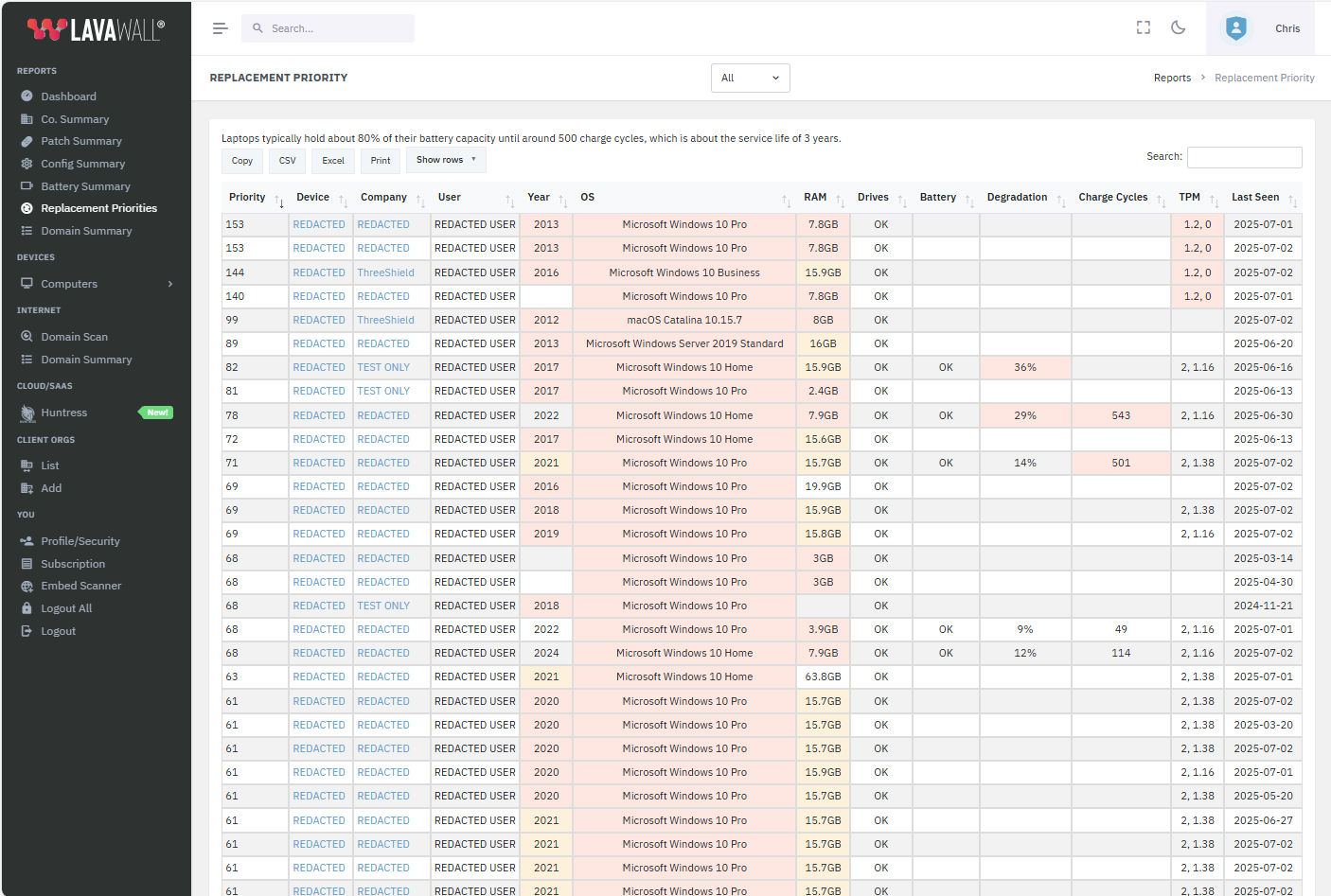Understanding the refresh cycle
Most companies establish a computer refresh cycle based on tax code depreciation.
As an IT professional, you know that some computers need to get replaced earlier than others based on use. You also want a way to prove that the cheap consumer-grade computers that people complain about need to get out of there, even if they’re just a couple years old.
One thing that accounting and IT agree on is that 5 years is too old for a laptop.
After 3 years, batteries have typically degraded by 20% and drives (both solid-state and spinning) start to accumulate errors. By 5 years, users complain more often about weak batteries and slow downs while the drive tries to move data to undamaged areas.
At that 5 year mark, operating system and hardware vendors usually stop patching and more vulnerabilities come up as well.
However, not all computers age at the same rate.
Lavawall® Replacement Prioritization Summary

Age
Lavawall® uses processor release, firmware, model numbers, and other factors to estimate the year the computer was released. It then prioritizes computers over 8, 5, and 3 years old.
Computers over 3 years old will be highlighted in yellow; those over 5 will be red.
While computer release date shouldn’t be the primary reason to replace a computer, the older a computer gets, the more likely it will have battery, storage, fan, and motherboard issues.
Battery Lifespan and Capacity Reduction
A typical laptop battery can handle around 500 charge cycles before its capacity starts to noticeably decline. Around 3 years or 500 charge cycles, batteries typically lose 20% of their capacity
The replacement prioritization looks at both charge cycles and actual battery degradation.
Click here for more information about Lavawall®’s battery reports.
Drive Health
Lavawall® regularly checks your drives (solid state and spinning) for physical and logical problems. If your drive is showing signs of problems, it can automatically or manually schedule a thorough disk scan that can block off bad parts of the disk the next time the computer restarts.
Operating System
Operating systems that will lose mainstream support within the next year (such as MacOS Catalina, Windows 10, and Windows Server 2019) will be highlighted in red. Consumer-grade versions, such as Windows 11 Home, will be highlighted in yellow.
Trusted Platform Module (TPM)
TPM is becoming increasingly important for Windows systems. Those that don't support TPM version 2 will be highlighted in red, since these systems do not support Windows 11 and other modern software
Memory (RAM)
Although 8GB of RAM is fine for schoolwork in a web browser, it isn’t enough to keep employees happy once you layer on required security tools.
16GB of RAM was enough in 2020, but we now recommend 32GB as a baseline for business computers.
Given the steep price increase on Macs, 24GB is acceptable for Apple devices in a pinch.
Just because you have a 16GB stick in your computer doesn’t mean that your operating system (Windows, Mac, or Linux) and programs can use it all. Many factors in the computer’s design and setup limit the available RAM on the computer. That's why we don’t measure the physical RAM, but rather what your Operating System can use.
If you have 8GB or less available, it will be highlighted in red; under 16GB will be yellow.
Details
Click any listed device name for full device details, including battery details, performance trends, software and service details, hardware details, and user details.
Click any company name to view all of the computers for that company.
If you have any questions or need further assistance, feel free to reach out through our chat, phone or email on our contact page!